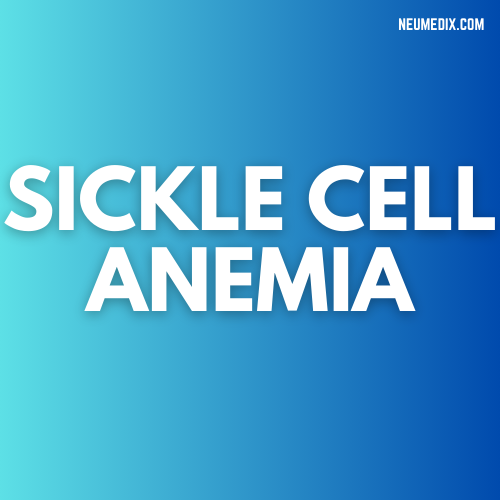1. What is Sickle Cell Anemia? Sickle cell anemia is a genetic disorder of the red blood cells, characterized by abnormal hemoglobin molecules that cause the red blood cells to become rigid, sticky, and shaped like sickles or crescent moons.
2. Types of Sickle Cell Disease:
- HbSS (Sickle Cell Anemia): Inheriting two abnormal hemoglobin S genes (one from each parent).
- HbSC: Inheriting one abnormal hemoglobin S gene from one parent and one abnormal hemoglobin C gene from the other.
- HbS Beta Thalassemia: Inheriting one abnormal hemoglobin S gene and one gene for beta thalassemia.
3. Symptoms of Sickle Cell Anemia:
- Episodes of pain (sickle cell crises).
- Fatigue and weakness.
- Jaundice (yellowing of the skin and eyes).
- Shortness of breath.
- Delayed growth and development (in children).
- Frequent infections.
4. Causes of Sickle Cell Anemia:
- Genetic Inheritance: Sickle cell anemia is inherited when a child receives two abnormal hemoglobin S genes, one from each parent.
- Hemoglobin S Mutation: A mutation in the gene that provides instructions for making hemoglobin causes the abnormal hemoglobin S molecule to form.
5. Risk Factors for Sickle Cell Anemia:
- Family History: Having a family history of sickle cell disease increases the risk.
- Ethnic Background: Sickle cell anemia is more common in people of African, Mediterranean, Middle Eastern, and Indian descent.
6. Diagnosis of Sickle Cell Anemia:
- Newborn Screening: Many countries screen newborns for sickle cell disease shortly after birth.
- Blood Tests: Hemoglobin electrophoresis can identify the presence of abnormal hemoglobin S.
- Genetic Testing: DNA analysis can confirm the presence of abnormal hemoglobin S genes.
7. Pharmacokinetics of Sickle Cell Anemia Treatment:
- Medications are aimed at managing symptoms and complications rather than altering the course of the disease.
- Hydroxyurea: Increases fetal hemoglobin production, which helps prevent sickle cell crises and reduces complications.
8. Pharmacodynamics of Sickle Cell Anemia Treatment:
- Blood Transfusions: Replace sickle-shaped red blood cells with healthy ones, improving oxygen delivery to tissues.
- Pain Management: Analgesic medications are used to alleviate pain during sickle cell crises.
9. Pharmacological Treatment of Sickle Cell Anemia:
- Hydroxyurea: Stimulates the production of fetal hemoglobin, reducing the frequency of pain crises and complications.
- L-Glutamine: Reduces the frequency of sickle cell crises and hospitalizations in children and adults.
10. Non-Pharmacological Treatment of Sickle Cell Anemia:
- Blood Transfusions: Regular transfusions can help prevent complications such as stroke and acute chest syndrome.
- Bone Marrow Transplantation: Can cure sickle cell anemia by replacing the defective bone marrow with healthy donor marrow.
11. Conclusion: Sickle cell anemia is a genetic disorder of the red blood cells that can cause significant complications and affect quality of life. Early diagnosis through newborn screening and comprehensive management strategies can help improve outcomes and reduce the risk of complications. While there is currently no cure for sickle cell anemia, ongoing research and advancements in treatment offer hope for better outcomes and quality of life for individuals living with this condition.




